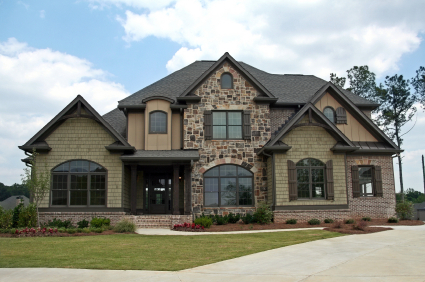A contentious issue with a definitive answer: “It depends.”
There’s no doubt that houses have been getting bigger. The U.S. Census Bureau reports that 26 percent of all new single-family houses built in 2007 were 3,000 square feet or larger. In some prosperous markets a 10,000-squaref-foot house doesn’t raise any eyebrows.
Even with all the sustainable features known to man, a 10,000-square-foot house built for a family of four can’t really be considered green. The reason is simple: It consumes a disproportionate share of materials and resources. The same house for an extended family of 20 would seem a lot greener.
At the heart of the green building movement is the idea that resources are finite, no matter how much money you have. Lowering consumption is an important benchmark in sustainable building, and that thinking extends to the materials that go into a house as well as the energy that’s required to heat and cool it.
An extravagantly large house that’s energy efficient and healthy is certainly better than one that wastes energy and is loaded with contaminants. But that doesn’t entirely justify the excesses of building a house big enough for 10 when only two people will live there.
The LEED for Homes rating system addresses this issue directly. Big houses are penalized; small ones are rewarded. It’s “neutral” size recommendations range from 900 square feet for a one-bedroom house to 2,850 square feet for a five-bedroom house. These numbers won’t work for every family, but they’re a reasonable place to start.
More Info:
To learn more, see Pro/Con: Does Size Matter?
Weekly Newsletter
Get building science and energy efficiency advice, plus special offers, in your inbox.











5 Comments
Can A Big House Be Green?
This article brings up some good points but that will also keep some homes from being certified LEED. Custom builders that specilize in larger homes will then lead more toward NAHB certification.
Too Big?
The above comment is very true. In our recent showcase of homes...a mountain resort area...the largest house at 10,000 sq ft earned a NAHB green build rating of gold as was voted most green of the 16 homes involved, including 4 others that were also NAHB green build rated. None were LEED rated. MAkes me think that the penalty needs to be a bit more severe in the NAHB program otherwisw houses like the one mentioned above really make the average guy touring the house feel that it really isn't such a meaningful certification.
If NAHB doesn't want to
If NAHB doesn't want to recognize size as a factor in their certification, then over the long term, their rating will become more suspect. Those who are serious about green building will see that LEED certification is a more valuable achievement and guide.
its about education
I think it is imperative for builders/remodelers alike, as well as architects to help educate the home buyer or customer. More often than not, we point the finger at the short comings of LEED vs NAHB Green etc and truthfully it is more about the committment to do the right thing rather than worry about certifications all of the time. All of us: builders, remodelers, architects, engineers....need to be on the same page........an appropriate house for the number of occupants that is sustainable!
Can a Big House Be Green
While smaller, or more modest-sized homes are generally more green and more sustainable, the current and future use of the house, along with analysis of energy use, heating/cooling zoning is a factor. For families who often have guests staying over, a larger home is needed, and those areas could be designed and zoned so that they can be efficiently climate controlled when not in use. Some homes are used for entertainment purposes, and for this more space is generally required. Proper planning and total cost of ownership for operating and maintaining should always be considered, even more so than initial cost.
Log in or create an account to post a comment.
Sign up Log in